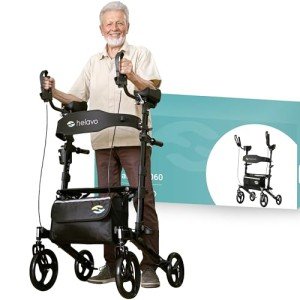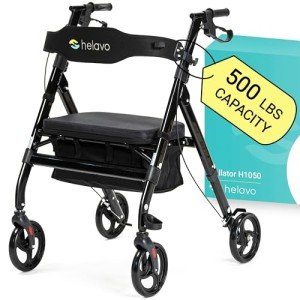Five Killer Quora Answers To Handicapped Walker
페이지 정보

본문
The Essential Guide to Handicapped Walkers: Enhancing Mobility for Individuals with Disabilities
Walking Aid With Seat help play a crucial role in boosting the quality of life for people with handicaps. Amongst these, handicapped walkers, likewise known as walkers or rollators, are important tools that help users in preserving mobility, independence, and security. This blog site post intends to provide an in-depth summary of handicapped walkers, discussing their types, advantages, and crucial factors to consider for users when picking a walker that best suits their requirements.

Tabulation
- What Is a Handicapped Walker?
- Types of Handicapped Walkers
- Standard Walkers
- Two-Wheeled Walkers
- Four-Wheeled Walkers
- Features to Consider When Selecting a Walker
- Advantages of Using Handicapped Walkers
- FAQs
- Conclusion
What Is a Handicapped Walker?
A handicapped walker is a mobility aid created to assist individuals who have trouble walking or maintaining balance due to impairments, injuries, or aging. It provides support, stability, and safety, helping users navigate their environment with greater confidence and independence. Handicapped walkers come in different styles to match different mobility difficulties, making them flexible tools for many individuals.
Types of Handicapped Walkers
Understanding the different types of walkers is crucial for selecting the ideal one. Below is a summary of the primary types of handicapped walkers:
| Type | Description | Ideal For |
|---|---|---|
| Requirement Walkers | Standard frame with no wheels, requiring the user to raise it to move. | People with stable balance. |
| Two-Wheeled Walkers | A lightweight Non-Slip Walker equipped with two front wheels for easier motion. | Users requiring more mobility support. |
| Four-Wheeled Walkers | An advanced model with four wheels, handlebars, and often a seat. | Those requiring maximum support and rest options. |
1. Requirement Walkers
Standard walkers, the a lot of basic version, are built as a tough frame. Users lift the walker and location it forward, permitting consistent movement. This type of walker is ideal for people with restricted mobility but who maintain good balance.
2. Two-Wheeled Walkers
These walkers integrate 2 front wheels, significantly improving maneuverability compared to basic walkers. Users can push the walker rather of lifting it, making it much easier to navigate.
3. Four-Wheeled Walkers
Also referred to as rollators, four-wheeled walkers featured wheels on all four legs, making them easy to press. Many designs also include a comfortable seat and back-rest, allowing users to take breaks during longer walks or outings.
Features to Consider When Selecting a Walker
Before purchasing a handicapped walker, it's important to evaluate specific features that might boost the user experience and safety. Here are some necessary considerations:
| Feature | Description |
|---|---|
| Weight Capacity | Ensure the walker supports the user's weight. |
| Height Adjustability | Search for adjustable handlebars for a correct fit. |
| Wheels Quality | Analyze if the wheels are robust for numerous surfaces. |
| Brake System | Recognize if it has a reliable braking system for safety. |
| Storage Options | Consider if it has a basket or bag for individual products. |
Benefits of Using Handicapped Walkers
The benefits of using handicapped walkers extend beyond mobility, supplying psychological and physical advantages:
- Increased Independence: Walkers enable users to move without relying exceedingly on caregivers or relative.
- Improved Safety: With improved stability, walkers considerably decrease the risk of falls, adding to a much safer living environment.
- Boosted Confidence: Users frequently report feeling more secure and confident when using a walker, motivating them to engage more in social activities.
- Health Benefits: Modern Rollator Walker Regular use of a walker can promote exercise, resulting in much better cardiovascular health, enhanced muscle tone, and overall well-being.
FAQs
1. How do I know which type of walker is best for me?
Choosing the very best walker depends upon your physical abilities and mobility needs. Consulting with a health care professional or physical therapist can supply customized suggestions based upon your particular health situation.
2. How should I keep my walker?
Routinely check your walker for wear and tear, mostly concentrating on the wheels and brakes. Clean down surfaces with a damp cloth to keep it clean and shop it in a dry place when not in usage.
3. Can I use a walker on irregular surfaces?
While some walkers are better matched for uneven surface areas than others, care is advised. It may be beneficial to select a walker with larger wheels for much better stability on such surfaces.
4. Exist walkers developed specifically for outdoor usage?
Yes, numerous four-wheeled walkers are specifically developed for outdoor usage, featuring larger wheels and more robust construction to manage different terrains.

5. Do walkers come in different colors or designs?
Yes, various styles, colors, and designs are offered to cater to personal preferences while still satisfying functional requirements.
Handicapped walkers are transformative aids that can significantly enhance the quality of life for people facing mobility challenges. By understanding the types of walkers, their features, and the benefits they use, users can make educated choices that line up with their personal mobility needs. As technology and design develop, the future of handicapped walkers assures even higher assistance and convenience, motivating independence and an active way of life for all.
- 이전글The 9 Things Your Parents Taught You About Double Glazing Installer 25.10.22
- 다음글Play m98 Casino Online in Thailand 25.10.22
댓글목록
등록된 댓글이 없습니다.

